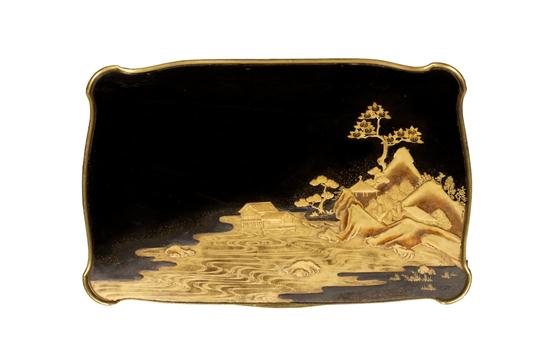I am not over-fond of resisting temptation.
Beckford was the only legitimate son of Alderman William Beckford, twice lord mayor of London and Member of Parliament. His mother, Maria (nee Hamilton), was descended from the royal House of Stuart. Being the only child of a late marriage, he was given
every encouragement. At the age of five he received piano lessons from the nine-year-old Mozart. He also received instruction from
Sir William Chambers and
Alexander Cozens in architecture and drawing. Upon his father's death in 1770, he inherited a vast fortune built on the Jamaican sugar trade. Making him, as his distant cousin
Lord Byron later put it,
England's richest son.
While touring England in 1779, he developed what he called a
strange wayward passion for
William Courtenay, the eleven-year-old son and heir of Viscount Courtenay. Beckford also became involved with Louisa Beckford, the unhappily married wife of one of his cousins. In 1780, the restless Beckford embarked on a European tour that his family hoped would ease his inner turmoil and dispel any rumors surrounding his friendship with Courtenay.
In 1781, inspired by a Christmas party held in
Courtenay's honour at Fonthill, Beckford wrote
Vathek - the story of an impious voluptuary who builds a tower. A tower so high that he not only can survey all the kingdoms of the the world, but he can also challenge god in his heaven. Beckford claimed to have written the initial French-language draft of
Vathek in one sitting over the course of three days and two nights. He had based his characters on historical figures and provided a wealth of detail. He intended to add to this story four episodic tales. While composing them, he arranged for the
Reverend Samuel Henley, an oriental enthusiast and former professor, to translate the entire work into English and to add footnotes explaining the allusions.
Unfortunately, completion of the episodes was to be interrupted. In the autumn of 1784 scandal broke . Beckford was charged with sexual misconduct with young
Courtenay. Reports of the scandal spread quickly, and, though his guilt was never proved, he, with his wife (he married
Lady Margaret Gordon in 1783) and
baby daughter, was forced into exile. In May 1786, in Switzerland, his wife died of puerperal fever after giving birth to their
second daughter. Beckford also learned that
Vathek was to be published anonymously, with the preface claiming that the work was directly translated from the Arabic. Subsequently, Beckford published a French edition in order to claim authorship (the uncompleted episodic tales were to remain unpublished until 1912).
In Childe Harold's Pilgrimage Byron wrote,
Unhappy Vathek, thou wert smitten with unhallowed thirst
Of nameless crime, and thy sad day must close
To scorn, and Solitude unsought - the worst of woes.
Beckford spent his time in exile traveling throughout Europe, eventually returning to England in 1796. Ostracised, he spent the remainder of his life collecting books, paintings, and rare works of art and building his extravagant Gothic pile,
Fonthill Abbey. Beckford supervised the planning and building of what was to become the most extraordinary house in England. In 1807 the house's great central tower collapsed and was rebuilt. Beckford grew notorious as both the creator of the increasingly popular
Vathek and as the reclusive owner of
Fonthill, where he lived until financial difficulties forced him to sell in 1822. The tower again later collapsed, destroying part of the building.
The design of the interiors and the furnishings at
Lansdown Tower, the house Beckford later built in Bath, gave tangible evidence to his creative genius. And quite possibly, if not laid , solidified the foundations of the English eclectic style.
One of a pair of silver-gilt waiters made by William Burwash for William Beckford
Coffer-shaped display cabinet
William Beckford and Henry Edmund Goodridge
probably made by English and Son, Bath
1831-41
Oak cabinet on stand made for the Scarlet Drawing Room
Lansdown Tower, Bath
1831 - 1841
Oak cabinet
Most likely designed by Beckford and his architect Henry Edmund Goodridge
A superb example of the furniture Beckford commissioned during his final years.
Cabinet made in Paris around 1825
Richly encrusted with hardstones and mounted in gilt bronze
The panels were made at the noted Gobelins workshops in Paris, late 17th Century.
Originally part of a suite of furniture at Fonthill Abbey
Sold at the Fonthill sale 1823
Siena marble console table
Commissioned by William Beckford for the vestibule at Landsdown Tower, Bath.
Most probably designed by the architect of the Tower, Henry Edmund Goodridge, in collaboration with Beckford.



















































































